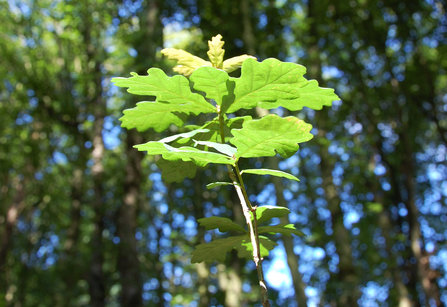There are many reasons for this, from the opportunities (habitat connectivity, reinstating previous land-use such as traditional orchards, woodland/wetland/grassland opportunities) and constraints (soil type, priority habitats, moisture levels, archaeology and heritage, views and infrastructure etc) to landholder aspirations and farm business considerations. A pragmatic approach from us enables interventions to happen where they would not happen at all if we always tried to follow a purist ecological agenda. We seek the common ground with landholders across the county, and there is lots of it. For example, more numerous, more connected and better managed hedgerows can be a vital habitat and corridor for wildlife – this can involve planting and guarding diverse native whips to protect them from deer and rabbit damage. Shelterbelts and traditional orchards likewise require planting and protecting, as do trees for timber or coppice products. Landholders often want us to help them to plant trees where they would not accept areas of natural colonisation, and woodland grants (eg English Woodland Creation Offer) often demand a density of woody growth that means natural colonisation may need supplemental planting. We enter into legal agreements with the landholders we work with and work with them to ensure that survival rate of trees is high, and we source saplings from Plant Healthy nurseries that provide UK and Ireland sourced and grown (UKISG) trees of local provenance, or from south of the planting area to ensure resilience to a changing climate.
GWT’s practical approach to more trees in the landscape

Oak sapling (c) Scott Petrek
Having said this, we recognise of course that natural colonisation is a way of encouraging habitats that are locally relevant and potentially more resilient for that. In most cases this would be a preferred option, and natural colonisation (often called natural regeneration) is always part of the discussion. Many of our schemes will have areas of natural colonisation within them, particularly buffering existing woodlands or hedgerows with an existing diverse seed source and where the ground is not too compacted. It can also be a cost-effective solution to tree-planting, but very often that is not the case, as deer fencing is expensive. Understanding the deer pressure at any given site, and seeking various ways to respond to that will often guide the kinds of intervention that are possible.
We remain open-minded and are always seeking to do things better, both for wildlife and for the farmers or landholders we are working with. This includes seeking better ways of reducing the carbon footprint of our work, protecting planted or regenerating trees and scrub and plotting a course as best we can between biodiversity gain, cost-effectiveness and the wishes and visions of the landholders who will be stewards of these landscapes.

